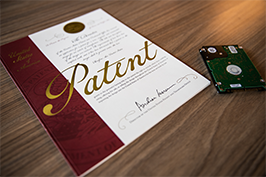STRATEGIES FOR OBTAINING STRONGER MEDTECH PATENTS IN LESS TIME
Medical device and MedTech companies invest significant time energy and money resources in research and development for innovative technologies that have the potential to revolutionize healthcare and change the world. However, without protection that patents provide, it may be difficult to bring their products to market and protect their investment from competitors. Every medical device company consider the following five (5) tips for protection their innovations and increasing their patent portfolio.
- File provisional patent applications.
All countries in the world operate on a “first to file” system. That means that the first to file for patent rights on an invention, will have superior rights over others. Not only do provisional patent applications help secure an early filing date, but provisional patent applications can be an upfront cost-saving strategy, provide one year of protection and allow companies to defer larger filing costs and continue product development if needed.
- Communicate with the Patent Examiner and Use Applicant Initiated Interview and After Final Interviews where applicable.
In the United States, an applicant is allowed at least one applicant Initiated Interview. During these interviews, the applicant’s attorney and the patent examiner can discuss the prior art, the invention, and the patent application’s claims and propose amendments to the claims. The interviews are extremely helpful to explain the inventive features of the invention and to help define the boundaries of a patent’s claims. Communicating with patent examiner can help resolve issues more quickly than without an interview, which leads to faster and more successful patent examination and stronger patents.
- Consider the USPTO’s fast-track programs.
The patent application process in the United States can have long waiting times. In fact, the United States Patent and Trademark Office (USPTO) currently has a backlog of over 780,000 unexamined patent applications. However, USPTO offers “Track 1” and “Accelerated Examination” programs for utility and design patent applications, which can significantly reduce wait times. Additionally, taking advantage of these programs may help a business decide if an international patent application should be filed and how to adjust the claims to expedite the examination process during international patent examination.
- Consider the Patent Prosecution highway.
The Patent Prosecution Highway (PPH) is an effective way to reduce the costs of international patent filings and examination costs. PPH is a program that allows patent applicants to request accelerated examination of their patent applications in participating countries. The program is designed to improve the efficiency of the patent examination process by leveraging the work done by other patent offices.
Under the PPH program, if an applicant receives a positive patent examination result from a first patent office, they can use this result to expedite examination in a second patent office. This allows the second office to rely on the work already done by the first office and reduces the workload on the second office.
The PPH program is designed to help applicants obtain patents more quickly and efficiently, while also reducing the workload of patent offices around the world. The program has been implemented in many countries, including the United States, Japan, and Europe.
- File continuations, continuations in part, divisional and by-pass applications.
Continuations and divisional applications are a cost-effective way to strategically broaden a patent portfolio. Additionally, filing continuations-in-part and by-pass patent applications allow you to add new matter in subsequent applications if needed.
In general, a well-drafted patent application with claims of the right scope can make it easier to succeed before the patent office. Searching for and addressing prior art before filing can create a stronger patent application and help reduce the risk of patent invalidation. While patent prosecution will likely never be a quick or easy process, following these strategies may help MedTech companies accelerate the process and achieve their patent goals.
This article was authored Derek Fahey, Esq., patent attorney with The Plus IP Firm. To learn more about, Derek Fahey, click here.











